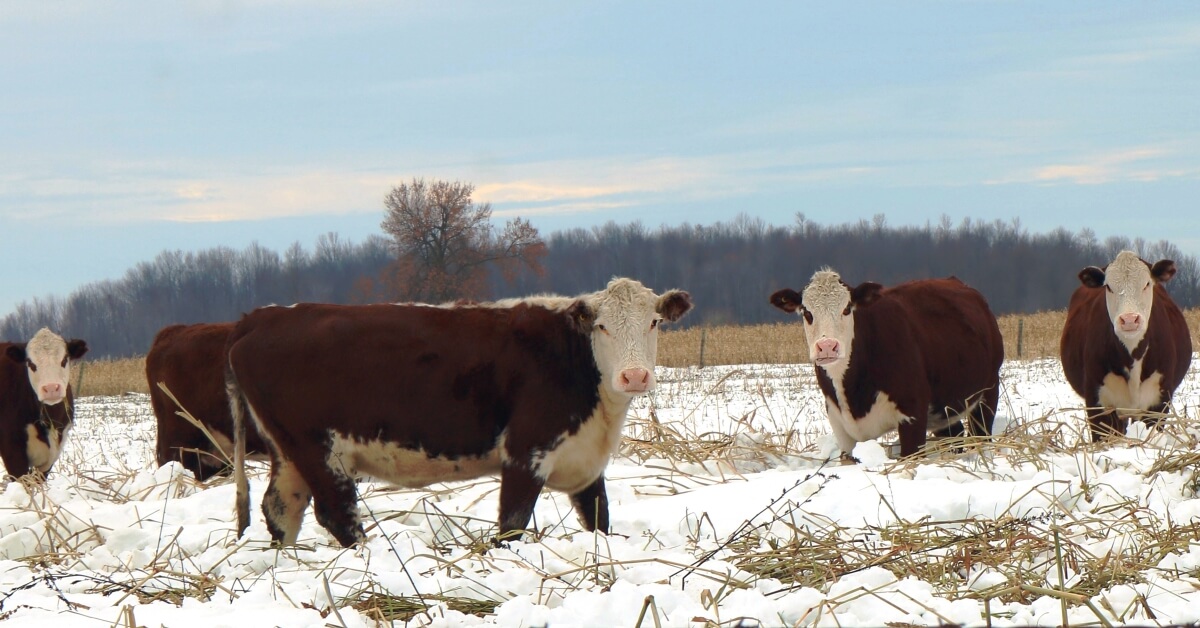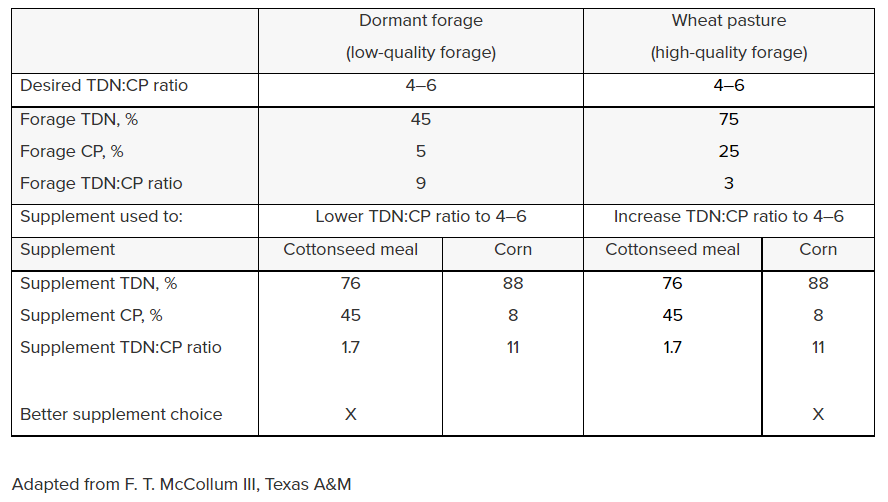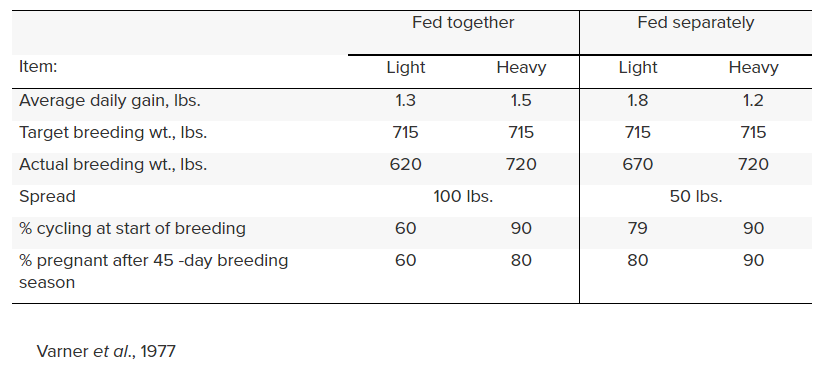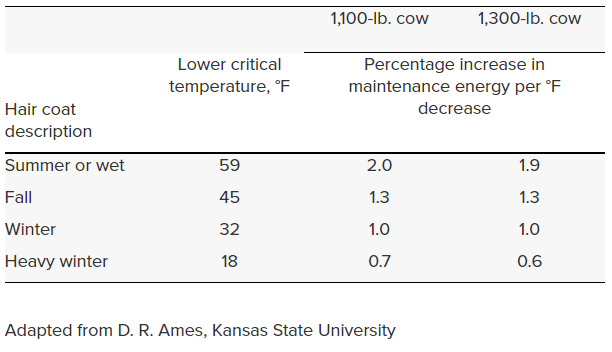Successful Winter Supplementation
Jan 17, 2022

Reprinted with permission from Hubbard Feeds
Cattle producers depend on effective and economical supplementation programs to meet the challenges that winter presents. When formulating supplementation programs, producers must consider a host of factors to meet their cowherds’ needs. The process of formulating and delivering winter supplements that help complete cattle diets can be made easier and more precise with six key must-know steps. Your operation may have several important characteristics that make it unique, but if you start with these six elements, a sound and practical winter cowherd supplementation program can become an efficient and effective segment of your business.
Know the animals’ nutritional requirements.
Requirements differ between replacement heifers, first- and second-calf cows, and mature brood matrons. The cattle’s body condition will reveal how much energy they have been consuming in comparison with their requirements, their production potential and their environment.
To properly develop replacement heifers, you should know both their present weight and your desired weight for them at the time of first breeding. This will help set the supplementation regime that will allow your herd to achieve your desired average daily gains, puberty and first breeding weight. Producers should target heifers to reach 55–65% of their mature weight at the start of the breeding season to optimize reproductive rates and longevity. The question then becomes: What is 55–65% of an animal’s mature body weight? You could multiply the average weight of the mature cowherd by 55–65% to estimate the target heifer breeding weights, or you can feed heifers to achieve moderate body condition scores for the breeding season.
Coming two-year-old bred heifers need to be fed to have nearly half a body condition score (BCS) more (i.e., a BCS from the upper 5s to 6s) than their older herd matrons (who often have a BCS of 5). Once the two- and three-year-old females begin experiencing lactation, they need to be supplemented to gain enough weight so they can advance to the proper mature weight and stature.
Finally, there is the heart of the cowherd: the mature cow. Mature cow requirements are primarily dependent on their body weight, milking potential and condition score. Proper supplementation will help ensure that reproduction rates are excellent, that cows will become pregnant early in the breeding season, and that there will be sufficient milk to support profitable weaning weights.
Know the nutritional value of forages.
The plant species, stage of plant maturity and harvesting methods can influence the nutritional content of forages. Laboratory analyses of this year’s alfalfa hay crops have revealed a range in crude protein (CP) from 14–22%. This difference in CP translates into as much as a 36% difference in the amount of hay needed to meet a beef cow’s protein requirements. Forage analyses have also shown that the energy levels are different as well.
Regardless of your winter nutrition program, energy intake is the number-one dietary component that affects whether or not cows can get and/or keep the proper BCS. Whether you are using a grazing system or are delivering harvested forage to cows, it is imperative that the energy and protein levels are balanced. Proper cow diets will have a ratio of total digestible nutrients (TDN) to CP of about 6:1. A 4–6:1 ratio will maximize forage intake and digestibility without the need for over- or under-feeding expensive protein or energy (see Table 1). Numerous trials have reported that when ruminal degradable protein is provided in levels below the animal’s daily requirements, supplementing protein will greatly enhance the intake and digestibility of low-quality forages. Poor-quality forages — like wheat straw, dormant warm-season grasses and crop residuesare often relied upon as the foundation of winter cow feeding programs, making supplemental protein key to their success. On the other hand, high-quality forages usually don’t need to be supplemented with protein. Forage testing can tell you the quality of your forage and makes balancing winter diets more accurate and cost effective.

Table 1. An example of how to choose the best supplement program based on the forage TDN:CP ratio.
Our Hubbard feed dealers work closely with Hubbard’s technical staff to interpret laboratory results and formulate winter programs that make effective and efficient use of ranch resources to optimize cowherd performance.
Know more than the forage’s nutrient value.
Many forages have unique characteristics that make them a feeding challenge. Forages can be contaminated with toxins, contain poisons or have palatability issues. Mycotoxins should be suspected anytime you experience less-than-ideal harvesting conditions or poor storage and/or if your forage is exposed to environmental stressors. Mold growth can wreak havoc on the health and performance of a beef cowherd. If you suspect that mold and mycotoxins are present, contact your Hubbard feed representative, as they can assist with sample collection, testing and laboratory test interpretations. Hubbard works closely with the Alltech Mycotoxin Testing Laboratory, a state-of-the-art facility committed exclusively to mycotoxin management.
Forage plant species can accumulate certain poisonous compounds — such as nitrates, prussic acid, oxalates and endotoxins — that affect forage intake, feed safety and animal performance. Knowledge is key to developing winter supplementation and feeding programs that safely and effectively incorporate antidotes to these problems.
Additionally, it is important to know your forage inventory, as the inventory determines the amount of supplement needed and the number of days of grazing or feeding. This is a key factor when determining the amount of supplement to purchase and the feeding strategies needed to get operations through to spring grazing and turnout.
Know how much supplement to feed.
Over- or under-feeding supplements has its consequences. Under-feeding will cause herd mates to compete for the available supplements and will widen the range in response to the supplement.
To illustrate this point, a replacement heifer trial was done with heifers that were either left unsorted or that were sorted into light- and heavyweight feeding groups. The winter diets were formulated to accomplish a specific target weight, which was set for the beginning of the breeding season. In the unsorted pen, the larger heifers dominated the feed intake and grew much faster than the lighter heifers. When comparing the heifers in the unsorted treatment group, the lighter heifers stayed behind their contemporaries in average daily gains and did not achieve their target breeding weights, and as a result, they had significantly lower pregnancy rates than the heavy heifers in the pen or the heifers in the other treatment group. The heifers sorted into light and heavy feeding groups were able to independently achieve the desired target breeding weights — on the same amount of feed used in the unsorted pen — and also achieved more uniform reproductive success. A trial summary is shown in Table 2.

Table 2. Weight changes and reproductive performance for light and heavy heifers when fed separately or as a group
Interestingly, sorting cattle into “like kinds” of feeding groups is a management practice that keen cattle owners have used for decades to improve profitability. Positive effects on animal performance and feed efficiency have also been demonstrated by sorting young, mature and older cows into management groups.
Finally, manage the number, placement and accessibility of bunks, feeding stations and supplement distribution, as these factors can greatly affect supplement intake. Crystalyx® low-moisture blocks are an effective part of many winter supplementation programs. As with any free-choice supplement, daily individual cow intake is a major concern. Proper placement of the supplement ensures that all cows have the supplement available to them 24 hours a day and that they will have uniform and consistent daily intakes.
Know how to adjust for winter weather conditions.
The lower critical temperature is the ambient temperature determined by air temperature, wind speed and humidity. When conditions drop below this ambient temperature, extra energy is needed to maintain body weight (see Table 3). Cattle have a lower critical temperature above which they are both comfortable and have the best feed efficiency. Savvy producers use the chart provided here to compensate for harsh weather conditions.

Table 3. The lower critical temperature and added energy needed to maintain cow body weight during cold stress
Protein, mineral and vitamin requirements are not changed by weather stress, so the only adjustment in cow rations necessitated by severe weather is an increase in maintenance energy. The consequences of not adjusting for cold weather may affect not only the cow but also her offspring. Research from Colorado State University has indicated that when cows are underfed in either energy or protein during the last trimester of pregnancy, they experience increased incidences of weak calf syndrome and calf scours than cows that are fed adequately.
Know the importance of mineral supplement.
Supplementing minerals, trace minerals and vitamins will ensure that all of the important dietary nutrients are being supplied to the cowherd. Even though these nutrients are supplemented in much lower amounts than either protein and energy, they are vitally important for the development and maintenance of the animal’s skeletal, reproductive and immune systems.
Mineral and vitamin concentrations can vary just as dramatically in forages as protein and energy levels. On the animal side, mineral and vitamin requirements will change with age, the stage of production and the stress level. Mineral supplements should focus on correcting mineral deficiencies or on correcting imbalances between minerals. The National Forage Survey (Corah, 1986) reported that forages were deficient in copper, zinc and selenium in more than 50% of the samples analyzed from 18 states.
In addition, feed additives can be included in mineral supplements to improve feed efficiency and animal health. Consult with your Hubbard Feeds dealer/representative to find the mineral supplement that best fits your operation.Blueprint® Mineral Supplementscontain the newest trace mineral technologies that have proven to be essential for maintaining and improving herd performance and health.
In summary, winter supplementation for the beef cowherd is a challenging management decision. The more you know about your production system from the standpoint of feeds, forages, the environment and your cattle, the better you can economically provide the proper supplementation to your cows during the tough winter season.